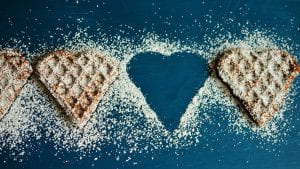
Our questions were:
- Food is part of our heritage. What recipes, foods and food traditions have been passed down in your family?
- How have meals and foods changed since your parents’ and grandparents’ time?
- Have you researched any aspect of FOOD in your ancestors’ lives? What resources have you found useful?
- What are some ways we can record and preserve family food, recipes, and food traditions for future generations?
As many of the participants had an Aussie/NZ/English background, many recipes and traditions were similar.
But many memories came back of things forgotten:
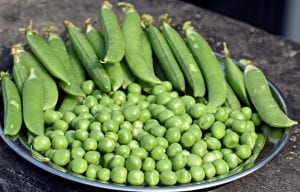
- Shelling peas with grandma – eating more than went in the bowl
- Making Christmas foods – finding money in the puddings
- Coffee fudge at Christmas … roast beef and Yorkshire pudding every Sunday
- Preserving foods and making jams, chutneys, pickled onions
- Kids birthday cakes from the Women’s Weekly
- Trying recipes from grandma’s cookery book
- Discussion about scones – jam first or cream first
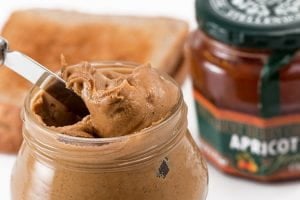
- School lunches and sandwich fillings – peanut butter or paste, vegemite or marmite, sugar sandwich
- School lunches were vegemite, peanut butter, ham or egg sandwiches. A cheese roll from the tuckshop was a treat. Eating a hot lunch with the boarders was a punishment
- Mr @cassmob would agree that boarders’ lunches were far from a treat. He tells a gruesome tale about being made to eat prunes before chapel. Tuck shop treats were finger buns with pink icing.
- We lived in an area with Greek migrants. I remember how different their school lunches were from ours. No sandwiches at all
- Warm milk at school
- The mulberry pies…the piecrust was all covered with sugar
- Growing your own veggies, fruit trees
- Looking after chooks and turkeys – on farm then killing for meals
- Butter vs margarine – dairy company adverts
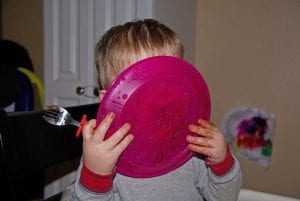
- Part of baking has to be the entitlement to “lick” the bowl!!
- Different cookery books – Green and Gold, CWA or WI (UK), Edmonds (NZ)
- We also used to go foraging in the woods for blackberries, blaeberries (bilberry) wild strawberries and geans (wild cherries). Mum would make jam or fruit crumbles
- Make a slice for my husband once a month and fruit cake once a year for me
- Having not long come out of rationing many things were still considered luxuries when I was a child
- I know we had some rationing but no idea what impact it had on our #familyfood. More impact in the UK.
- I cook 4 nights and husband does 3 or we eat out, often prefer to eat in the middle of the day now rather than at night. Still prefer fresh home cooked
- My go-to cakes for the kids are choc mud cake and lemon sour cream cake – making our own traditions. But we still enjoy Mum’s one
How times have changed
- Children not talking at the table was fortunately not a rule in our house. Dad said in the 1920s when he was young you did not talk.
- They did use to boil veg until within an inch of it’s life! Nothing like our crisp veg today
- My foods have had to change as I’m on a special diet. But the style is much the same as my mother’s. I rarely bake
- I feel that way about brains, tripe and lambs fry, not to mention peas as hard as marbles
- Lots of food things were delivered when I was a child. Milk, fish, soft drinks, bread…
- I love home cooked cakes and biccies but my hips don’t
- We always had tea with our meals and there was always bread and butter on the table
- Mealtimes were more formal with everyone gathering at the same time. This can still happen but is more relaxed nowadays. Some people never use the table, eating from a tray on the lap
- I had never had restaurant or takeaway food until I was about 19 or 20 always home cooked
- We thought we were exotic when we went to the Chinese Restaurant for Curried prawns and rice or a Chinese omelet.
- We concern ourselves more with dietary requirements and providing healthy food for our families, such as low fat or sugar free
- we now have more Asian style food and use chili and curries which my grandparents never did.
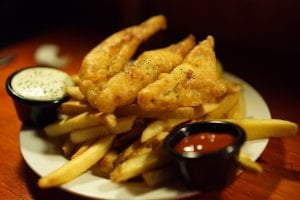
- Eating outside the home (except on a picnic) was rare. Occasionally a fish & chips takeaway and very rarely a special visit to a Chinese restaurant to have Aussie-fied meals.
- My paternal grandmother was Irish so she cooked traditional Irish cuisine. My mother’s family were Swiss/ German and her cooking was heavily influenced by her German heritage. She was very excited when the first Pizza Hut opened though
- Meals “back in the day” were always served with a cup of tea and a slice of bread. Wine was never seen and beer only for special events.
- I have memories of heavily boiled vegies. Lightly steamed would have been unthinkable in my grandmothers kitchen
- So I do have a tradition. Creaming the butter and sugar properly. But if my Mum got it from Nana I will never know. No marg.
- My grandmother at some point in the 60s saved a “diet plan” from a women’s mag that was 10 days of various ways to serve potatoes… only potatoes (ok and some butter & spices). I love potatoes… but no thanks!
- Food when I was a child was very much of British origins. Food is much more multi-cultural now. There was no fast food. My favourite memories of food are my grandmother’s home made ice-cream, caramel custard and rosella jam
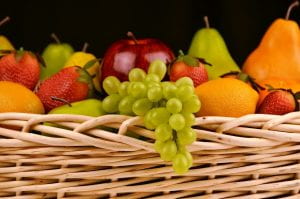
- The variety of veg and fruits has expanded though we always had 1 or 2 bowls of fruit in the house and often had many veg on our plate. I thought it was odd at friends places when you had meat, potato and one other veg
- Visits to Grandma (Mum’s Mum) always meant Saos, tomato, cheese and lots of butter!
- My mum used to bake every Saturday – biscuits, slices, cakes. Fruit cake was a good option for lasting through the week
- I treasure Mum’s recipe book but would never cook her recipes. My grandmother was a wonderful cook but she didn’t have written recipes, they were all in her head.
Some Christmas and birthday recipes
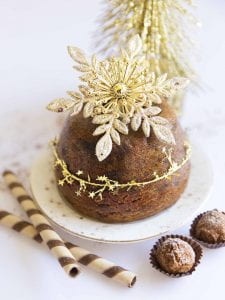
My mother made ‘snowballs’ at Christmas. Basically a scone mixture made into balls, coated in jam when cooked and rolled in desiccated coconut – Angela
Mum’s “Xmas Balls” are a riff on truffles that make dessert worthwhile. Marshmallows wrapped in crushed wine biscuits in choc, rolled in coconut. Delish! – Melissa
Short bread, White Christmas and Christmas puddings with money inside
The family birthday cake was always the One Egg Chocolate Sponge recipe from the Edmonds Cookery Book. My mum last made it on Sunday for my youngest’s birthday! Still tastes good 
Researching food
Good old Trove has given me excellent stories about my ancestor who was a pastry cook and had refreshment rooms in Charters Towers as well as winning prizes at the Ipswich Ag Show – Pauleen
Show competitions would be a good thing to check out in newspapers. Women’s institutes, church fetes sometimes did recipe books and could also have details of the event – Fran
A3 Old magazines often contained RECIPES and recipe competitions. Trove has this Women’s Weekly edition with recipes from May 1942. You might find your ancestors entering a recipe competition #ANZAncestryTime pic.twitter.com/RgInzVawBv
— Sharn White (@SharnWhite) November 24, 2020
The local history for my Bavarian ancestor told me what was served in his family’s inn – Pauleen
Something to consider when thinking about the food our ancestors bought—it wasn’t always wholesome! This is from “Adulterations of Food: With Short Processes for Their Detection” by Rowland John Atcherley, published 1874. – One Place Studies

Convict records sometimes described what they ate. It usually wasn’t a great diet – Sharn
A combination of oral history and Trove stories revealed my ancestor’s citrus specialties, sharing fruit with neighbours and making wine – Pauleen
Some of my ancestors were in workhouses and I have used that website to learn about what they ate and what conditions were like – Shauna
Also, for anyone with #Shropshire ancestors, this volume might be of interest. Purchased to help with my Shropshire-based Atcherley ancestors and kin (my one-name study) it will also be relevant to my Waters Upton #OnePlaceStudy. #ANZAncestryTime pic.twitter.com/wNxNYrQpZj
— Society for One-Place Studies (@OnePlaceStudies) November 24, 2020
One of my relatives who worked as a gardener had a bit written in his obituary in the paper – Hilary
Some of the shipping documents reveal that and also the compulsory levels of food people needed to be allocated. The German ships weren’t always as well managed compared to those from England – Pauleen
Only when it’s recorded that a particular person was ‘noted’ for a dish or cuisine, eg my 3x great grandmother Betsy who apparently made a mean South African Bredie. -Gen X Alogy
Methods of cooking were different too. A big range with no temperature regulator is worlds away from a microwave! – Angela
A3 Newspapers are an excellent source of information about our ancestors’ diets. This 1824 article from the Freemans’ Journal (Dublin) tells me how my Irish ancestors might have used a readily available plant as a vegetable. #ANZAncestryTime pic.twitter.com/ym9CNS0Zim
— Sharn White (@SharnWhite) November 24, 2020
I have really looked into shipboard diaries to see what they ate on the voyage out. Log of logs is a great resource to find diaries – Shauna
I’m trying to research my gg-gf, Harry Bevin, who was a baker, and I would kill to find a photo of his bakery in Wanganui! My g-gf, his SIL, worked with him too. I think I need to make a trip to the library. – Melissa
Advertisements in newspapers for FOOD imports, from the time and place where ancestors lived can tell us what kinds of foods were available to purchase for those who could afford them – Sharn
I was very fortunate to get a fabulous oral history about my German ancestor’s food traditions and preparation of sausages. Fantastic story – Pauleen
Ingredients have changed over the decades. Even cookery books from the 1970s do not have many spices that are readily available nowadays. – Angela
A stottie cake is a very soft flat bread. ‘Stotted’ is the Geordie word for ‘thrown’. The soft dough was rolled into a ball and then thrown down onto the griddle or baking sheet where it flattened out. #ANZAncestryTime pic.twitter.com/MZlVXJMZZw
— Mining the Past (@MiningthePast) November 24, 2020
Recipes were often handwritten or kept in their heads! Early cookery books were for ‘big houses’ I think. Mrs Beetons Cookery Book was an early UK one. Doorstop of a book! – Angela
Recording for future generations
Sharn: Scan and enter family recipes to EVERNOTE to keep them in one folder. You can use TAGS to search easily. Pinning family recipes on a PINTEREST Board enables you to keep them in a ‘folder’ online which can be shared with others
Jill: I have scanned and digitised all my favourite recipes. I tossed out many I had ripped out of magazines.
Hilary: talk to younger family and make recipes to share with the family
Pauleen: Teaching our grandchildren to cook can introduce them to #familyfood traditions as well as teach them cooking skills.
Hilary: We need to share our recipes and memories through video, audio and written records on blogs and websites
Sharn: Print family recipes on tea towels, in frames or a recipe book to give family members as gifts
Shauna: we can write about these food traditions in our blogs or include them in family histories. I’m also keen to learn how to cook some of the old recipes eg Cornish pasties that I know my Cornish miners must have eaten
Pauleen: Photobooks are easy to produce – we could even take photos of the steps as well as tell the background story.
Maggie: Continuing traditions (or starting new ones) with younger family members. My kids and I make a gingerbread house every Christmas.
Pauleen: Back in the day our family members shared their favourite recipes with friends. Over the years we’ve done the same, only more recently it’s been done electronically.
Brooke: after Grandma died we made a photo memory book & included a couple of her Xmas recipes, pate & rum balls. We make those recipes every Xmas time
Online websites about food in general
- Judy gave us a food timeline including recipes
- Jennifer showed us SBS site on history of Aussie food, British food in 19th century,
- Hilary showed us the BBC Food website including Welsh Cakes
- Maggie believes these are the best scones in Wellington, New Zealand
- Melissa found Family Tree post with hints about food memories
- Ancestry have a post about popular foods in 1800s Australia
- Angela mentioned the Irish Museum of Country Life
Blogging about food
- Jennifer – Welsh cakes,
- Maggie – ANZAC biscuits her Nanna made,
- Carmel – A-Z on foods see list at bottom of post,
- Pauleen – Dinner with ancestors, lunch with a fearless female, weekend picnics, dinner time, restaurants, food and festivities, favourite foods,
- Sharn- Grandmother’s cooking, Salad Oil Thief,
- Judy – White Christmas recipe,
- One place studies blogging prompts for next year
Loved these comments
I still bake using recipes from my grandmother – it reminds me of all those wonderful afternoon tea times with her. Plus, the kids love the yummy food!
What a shame Twitter does not have scents – we would all be swooning over bakery smells.
Readers: What are your favourite memories about food? Who were they with and what were you doing?

Hi Sue it was a great food discussion that we had. So many hidden memories came up for me. Thanks for this wrap up. Saved to Pinterest
Great summary, thanks again Sue
A great synopsis of a fun discussion. Thanks for bringing it together.
Ahh Sue you are making my mouth water.Try looking up Pufftaloons if you don’t have a cholesterol problem yet eat and enjoy! Enjoy them anyway life is short.Regards Marg